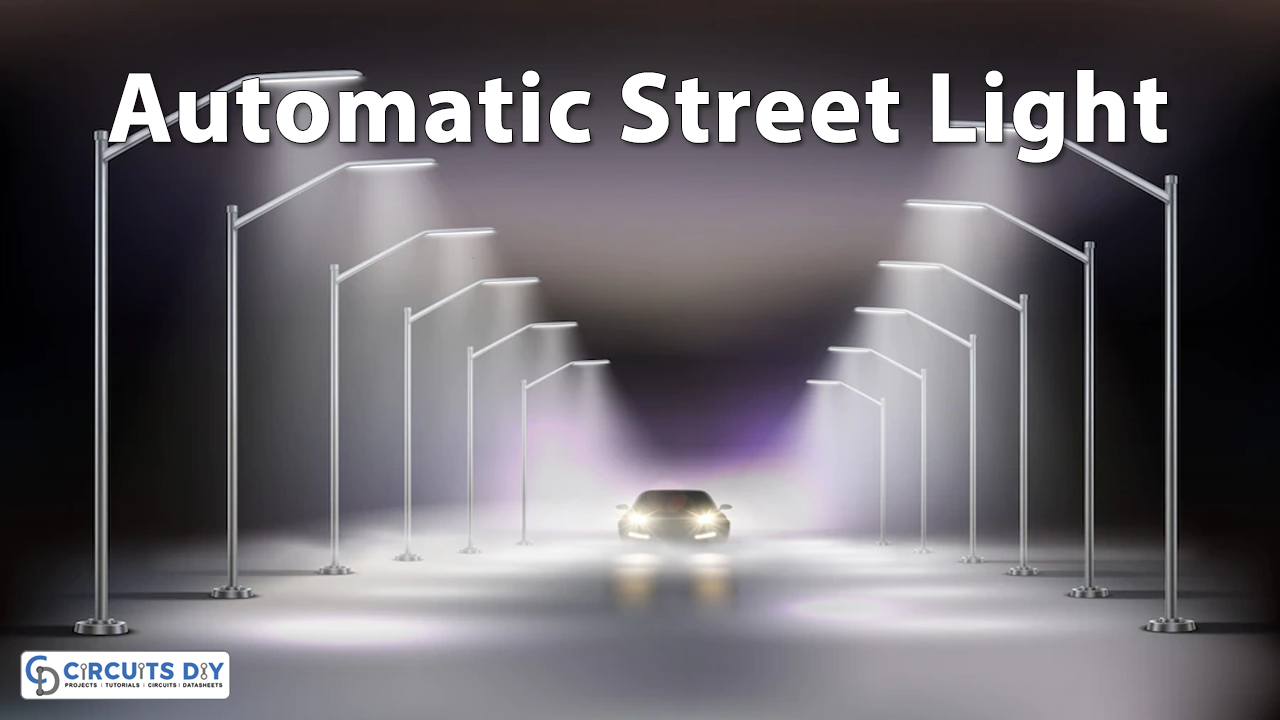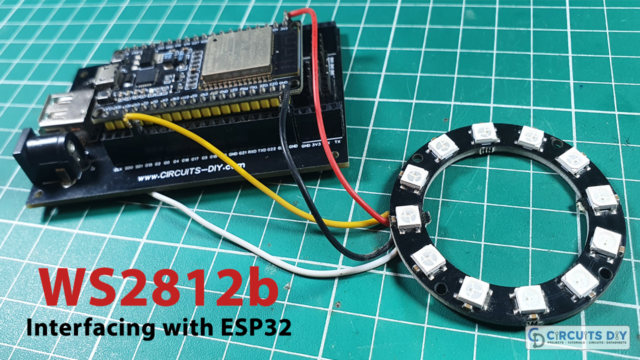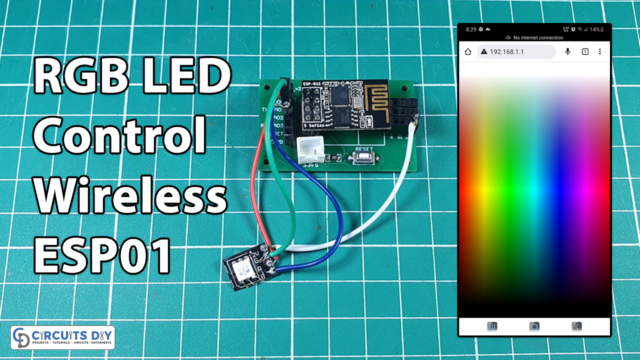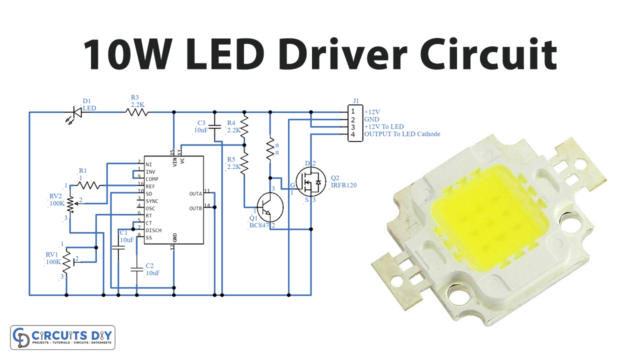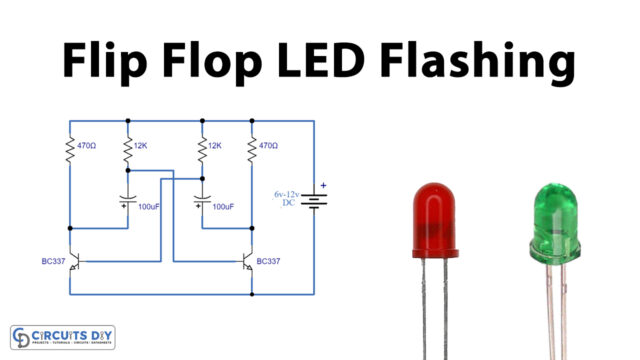Automatic street lights are becoming very popular as these become elegant solutions because it needs no manual operation for switching ON and OFF. When there is a need for the light it automatically switches ON, as when darkness rises to a certain level the sensor circuit gets activated and switched ON lights. And when there is another source of light i.e. daytime, the street light gets OFF.
The sensitivity of the street light can also be adjusted. Here we design a circuit with easily available components, for high-power switching we have used a relay (electromagnetic switch). So an automatic street Light circuit is designed to turn ON when there is no adequate lighting. Earlier fluorescent lights were used to build such circuits. But the use of LEDs has proven to provide adequate lighting for a longer period before draining the battery.
Hardware Required
| S.no | Component | Value | Qty |
|---|---|---|---|
| 1. | Transistor | BC107 | 1 |
| 2. | Switching Transistor | SL100 | 1 |
| 3. | LDR (Light Dependent Resistor) | 5mm | 1 |
| 4. | Relay | 9V | 1 |
| 5. | Lamp | 230V | 1 |
| 6. | Resistor | 1KΩ | 2 |
| 7. | Variable Resistor | 100KΩ | 1 |
| 8. | Fuse | – | 1 |
| 9. | Connecting Wires | – | – |
| 10. | Battery | 9V | 1 |
Circuit Diagram
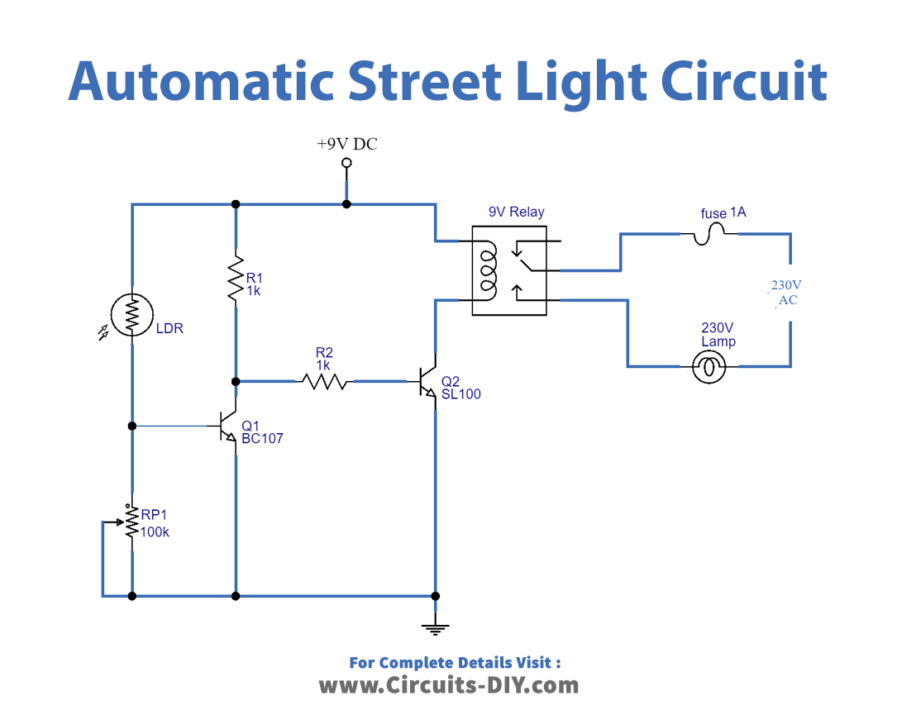
Working Explanation
As we can see, this circuit consists of a common 5mm LDR (light-dependent resistor), transistor BC 107, and switching transistor SL 100. Here this switching transistor collector terminal is connected to a 9-volt relay terminal. Further, a 230 Volt lamp is connected with relays common terminal and N/O terminal. When the light falls on LDR it gives low resistance to the current flow through it, this supply drives BC107 and connects the SL100 transistor base to the ground. When the LDR feels dark conditions it gives high resistance to the current flow through it, so the DC bias from the R1 resistor reaches the SL100 transistor base terminal.
So that SL100 receives enough base supply to turn on. By the way, the relay terminal is connected to the ground and becomes an electromagnet to attract a common lever to N/O contact. The lamp starts to glow when the common terminal completes the lamp circuit through the N/O terminal. Keep LDR behind the lamp to ensure the lamp light is not falling on LDR. As the LDR should observe the sunlight only.
Applications
Used as an automatic street light.


